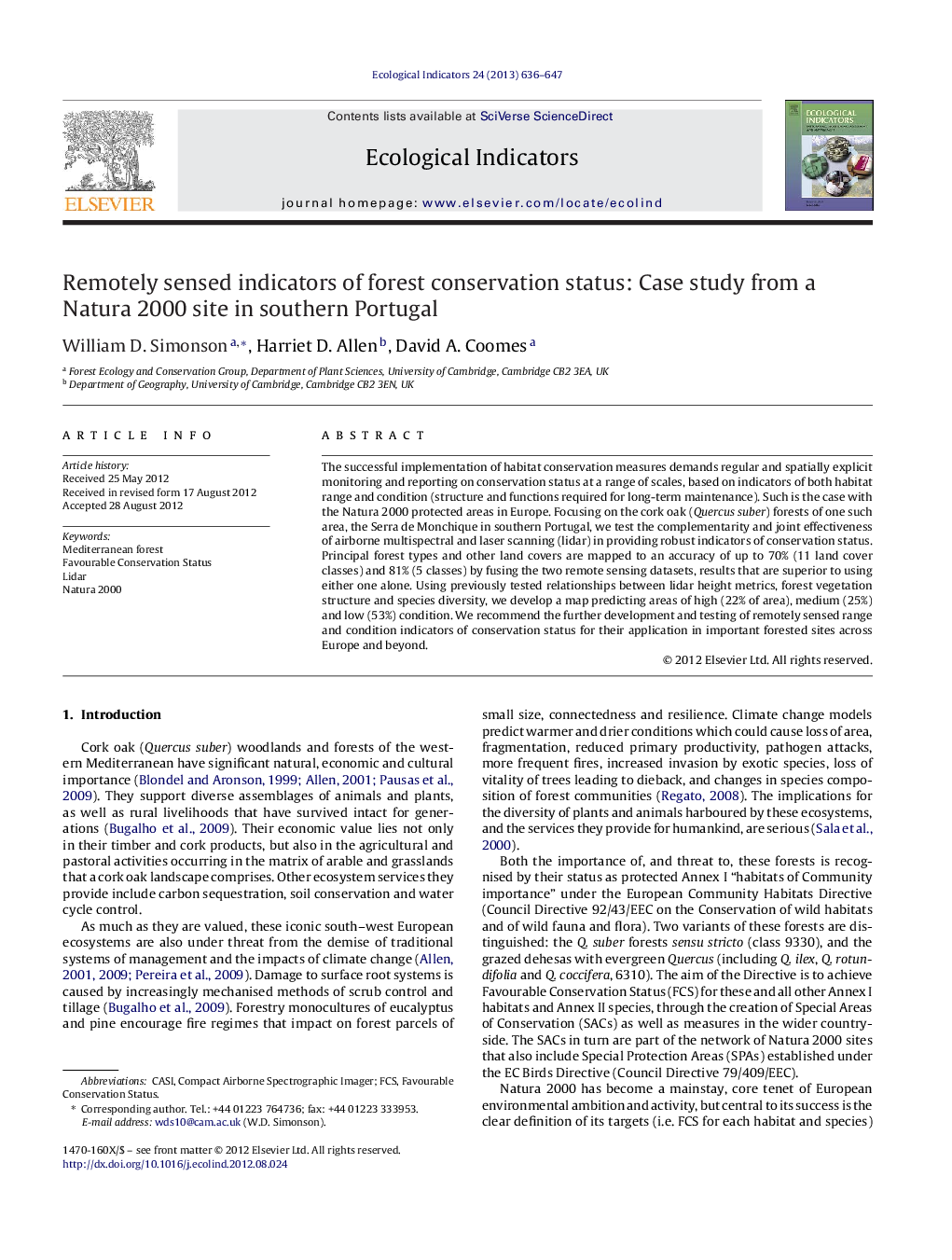| Article ID | Journal | Published Year | Pages | File Type |
|---|---|---|---|---|
| 4373685 | Ecological Indicators | 2013 | 12 Pages |
The successful implementation of habitat conservation measures demands regular and spatially explicit monitoring and reporting on conservation status at a range of scales, based on indicators of both habitat range and condition (structure and functions required for long-term maintenance). Such is the case with the Natura 2000 protected areas in Europe. Focusing on the cork oak (Quercus suber) forests of one such area, the Serra de Monchique in southern Portugal, we test the complementarity and joint effectiveness of airborne multispectral and laser scanning (lidar) in providing robust indicators of conservation status. Principal forest types and other land covers are mapped to an accuracy of up to 70% (11 land cover classes) and 81% (5 classes) by fusing the two remote sensing datasets, results that are superior to using either one alone. Using previously tested relationships between lidar height metrics, forest vegetation structure and species diversity, we develop a map predicting areas of high (22% of area), medium (25%) and low (53%) condition. We recommend the further development and testing of remotely sensed range and condition indicators of conservation status for their application in important forested sites across Europe and beyond.
